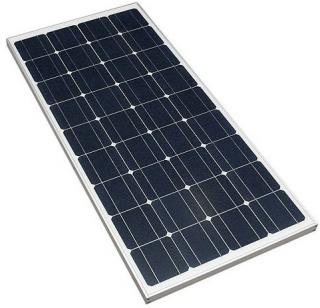General Information
Sources + Thanks:
Adaption CODESO, latest changes of contents 01/2004.
Please send us a note if there is any error, we will appreciate.
REPUBLIC OF ECUADOR
Conventional long form:
Republic of Ecuador
Conventional short form:
Ecuador
Government type:
Republic
Capital:
Quito
Administrative divisions:
22 provinces (provincias, singular - provincia); Azuay, Bolívar, Cañar, Carchi, Chimborazo, Cotopaxi, El Oro, Esmeraldas, Galápagos, Guayas, Imbabura, Loja, Los Ríos, Manabí, Morona-Santiago, Napo, Orellana, Pastaza, Pichincha, Sucumbíos, Tungurahua, Zamora-Chinchipe
Independence:
24 May 1822 (from Spain)
National holiday:
Independence Day (independence of Quito), 10 August (1809)
Constitution:
10 August 1998
Legal system:
Based on civil law system; has not accepted compulsory ICJ jurisdiction
Suffrage:
18 years of age; universal, compulsory for literate persons ages 18-65, optional for other eligible voters
Executive branch:
chief of state: President Lucio GUTIERREZ (since 15 January 2003); Vice President Alfredo PALACIO (since 15 January 2003); note - the president is both the chief of state and head of government elections: the president and vice president are elected on the same ticket by popular vote for four-year term (no reelection); election last held 20 October 2002; runoff election held 24 November 2002 (next to be held NA October 2006) head of government: President Lucio GUTIERREZ (since 15 January 2003); Vice President Alfredo PALACIO (since 15 January 2003); note - the president is both the chief of state and head of government cabinet: Cabinet appointed by the president election results: results of the 24 November 2002 runoff election - Lucio GUTIERREZ elected president; percent of vote - Lucio GUTIERREZ 54.3%; Alvaro NOBOA 45.7%
Legislative branch:
unicameral National Congress or Congreso Nacional (100 seats; members are popularly elected by province to serve four-year terms) elections: last held 20 October 2002 (next to be held NA October 2006) election results: percent of vote by party - NA%; seats by party - PSC 25, PRE 15, ID 16, PRIAN 10, PSP 9, Pachakutik Movement 6, MPD 5, DP 4, PS 3, independents 7; note - defections by members of National Congress are commonplace, resulting in frequent changes in the numbers of seats held by the various parties
Judicial branch:
Supreme Court or Corte Suprema (new justices are elected by the full Supreme Court)
Political parties and leaders:
Concentration of Popular Forces or CFP [Averroes BUCARAM]; Democratic Left or ID [Rodrigo BORJA Cevallos]; National Action Institutional Renewal Party or PRIAN [leader NA]; Pachakutik Movement [Miguel LLUCO]; Patriotic Society Party or PSP [leader NA]; Popular Democracy or DP [Dr. Juan Manuel FUERTES]; Popular Democratic Movement or MPD [Gustavo TERAN Acosta]; Radical Alfarista Front or FRA [Fabian ALARCON, director]; Roldosist Party or PRE [Abdala BUCARAM Ortiz, director]; Social Christian Party or PSC [Pascual DEL CIOPPO]; Socialist Party or PS [leader NA]
Political pressure groups and leaders:
Confederation of Indigenous Nationalities of Ecuador or CONAIE [Leonidas IZA, president]; Coordinator of Social Movements or CMS [F. Napoleon SANTOS]; Federation of Indigenous Evangelists of Ecuador or FEINE [Marco MURILLO, president]; National Federation of Indigenous Afro-Ecuatorianos and Peasants or FENOCIN [Pedro DE LA CRUZ, president]; Popular Front or FP [Luis VILLACIS]
International organization participation:
CAN, ECLAC, FAO, G-77, IADB, IAEA, IBRD, ICAO, ICC, ICCt, ICFTU, ICRM, IDA, IFAD, IFC, IFRCS, IHO, ILO, IMF, IMO, Interpol, IOC, IOM, ISO, ITU, LAES, LAIA, NAM, OAS, OPANAL, OPCW, PCA, RG, UN, UNCTAD, UNESCO, UNHCR, UNIDO, UPU, WCL, WCO, WFTU, WHO, WIPO, WMO, WToO, WTrO
Diplomatic representation in the US:
Chief of mission:
Ambassador Raúl GANGOTENA Rivadeneira
Consulate general:
Chicago, Houston, Los Angeles, Miami, New Orleans, New York, Newark, Philadelphia, and San Francisco FAX: [1] (202) 667-3482 telephone: [1] (202) 234-7200 chancery: 2535 15th Street NW, Washington, DC 20009
Diplomatic representation from the US:
Chief of mission:
Ambassador Kristie Anne KENNEY embassy: Avenida 12 de Octubre y Avenida Patria, Quito mailing address: APO AA 34039 telephone: [593] (2) 256-2890 FAX: [593] (2) 250-2052
Consulate general:
Guayaquil
Flag description:
Three horizontal bands of yellow (top, double width), blue, and red with the coat of arms superimposed at the center of the flag; similar to the flag of Colombia, which is shorter and does not bear a coat of arms
Economy
Economy - overview:
Ecuador has substantial oil resources and rich agricultural areas. Because the country exports primary products such as oil, bananas, and shrimp, fluctuations in world market prices can have a substantial domestic impact. Ecuador joined the World Trade Organization (WTrO) in 1996, but has failed to comply with many of its accession commitments. The aftermath of El Nino and depressed oil market of 1997-98 drove Ecuador's economy into a free-fall in 1999. The beginning of 1999 saw the banking sector collapse, which helped precipitate an unprecedented default on external loans later that year. Continued economic instability drove a 70% depreciation of the currency throughout 1999, which forced a desperate government to "dollarize" the currency regime in 2000. The move stabilized the currency, but did not stave off the ouster of the government. Gustavo NOBOA, who assumed the presidency in January 2000, has managed to pass substantial economic reforms and mend relations with international financial institutions. Ecuador completed its first standby agreement since 1986 when the IMF Board approved a 10 December 2001 disbursement of $96 million, the final instalment of a $300 million standby credit agreement. In February 2003, newly installed president Lucio GUTIERREZ faced a budget gap and massive foreign debt. He has pledged to use oil revenues to pay off debt and is seeking additional IMF support.
GDP:
Purchasing power parity - $42.65 billion (2002 est.)
GDP - real growth rate:
3.4% (2002 est.)
GDP - per capita:
purchasing power parity - $3,200 (2002 est.)
GDP - composition by sector:
agriculture: 11% industry: 33% services: 56% (2001 est.)
Population below poverty line:
70% (2001 est.)
Household income or consumption by percentage share:
lowest 10%: 2.2% highest 10%: 33.8% (1995)
Distribution of family income - Gini index:
43.7 (1995)
Inflation rate (consumer prices):
12.5% (2002 est.)
Labor force:
3.7 million (urban)
Labor force - by occupation:
agriculture 30%, industry 25%, services 45% (2001 est.)
Unemployment rate:
7.7%; note - widespread underemployment (2001 est.)
Budget:
revenues: $5.6 billion expenditures: planned $5.6 billion, including capital expenditures of $NA (2001 est.)
Exports:
$4.9 billion (2002 est.)
Exports - commodities:
petroleum, bananas, shrimp, coffee, cocoa, cut flowers, fish
Exports - partners:
US 39%, Colombia 5.6%, South Korea 5.1%, Germany 5%, Italy 4.4% (2002)
Imports:
$6 billion (2002 est.)
Imports - commodities:
machinery and equipment, chemicals, raw materials, fuels; consumer goods
Imports - partners:
US 28.6%, Colombia 14.4%, Japan 6%, Chile 4.5%, Brazil 4.1% (2002)
Debt - external:
$14.4 billion (2002)
Economic aid - recipient:
$120 million (2001)
Currency:
US dollar (USD)
Currency code:
USD
Exchange rates (former):
sucres per US dollar - 25,000 (2002), 25,000 (2001), 24,988.4 (2000), 11,786.8 (1999), 5,446.57 (1998)
Communications
Telephones - main lines in use:
1,115,272 (1999)
Telephones - mobile cellular:
384,000 (1999)
Telephone system:
general assessment: generally elementary but being expanded domestic: facilities generally inadequate and unreliable international: satellite earth station - 1 Intelsat (Atlantic Ocean)
Radio broadcast stations:
AM 392, FM 35, shortwave 29 (2001)
Television broadcast stations:
7 (plus 14 repeaters) (2001)
Internet country code:
.ec
Internet Service Providers (ISPs):
31 (2001)
Internet users:
328,000 (2002)
Transportation
Railways:
total: 966 km narrow gauge: 966 km 1.067-m gauge (2002)
Highways:
total: 43,197 km paved: 8,164 km unpaved: 35,033 km (2000)
Waterways:
1,500 km
Pipelines:
gas 71 km; oil 1,575 km; refined products 1,185 km (2003)
Ports and harbours:
Esmeraldas, Guayaquil, La Libertad, Manta, Puerto Bolívar, San Lorenzo
Military expenditures
Military expenditures - dollar figure:
$720 million (FY98)
Military expenditures - percent of GDP:
3.4% (FY98)
Transnational Issues
Disputes - international:
none
Illicit drugs:
significant transit country for cocaine originating in Colombia and Peru; importer of precursor chemicals used in production of illicit narcotics; dollarization may raise the volume of money-laundering activity, especially along the border with Colombia; increased activity on the northern frontier by trafficking groups and Colombian insurgents
This page was last updated on 18 December, 2003
Industries:
petroleum, food processing, textiles, metal work, paper products, wood products, chemicals, plastics, fishing, lumber
Industrial production growth rate:
5.1% (2001 est.)
Electricity - production:
75.23 billion kWh (2001)
Electricity - production by source:
fossil fuel: 81% hydro: 19% other: 0% (2001) nuclear: 0%
Electricity - consumption:
69.96 billion kWh (2001)
Electricity - exports:
0 kWh (2001)
Electricity - imports:
0 kWh (2001)
Oil - production:
421,200 bbl/day (2001 est.)
Oil - consumption:
129,000 bbl/day (2001 est.)
Oil - exports:
NA (2001)
Oil - imports:
NA (2001)
Oil - proved reserves:
2.358 billion bbl (37257)
Natural gas - production:
160 million cu m (2001 est.)
Natural gas - consumption:
160 million cu m (2001 est.)
Natural gas - exports:
0 cu m (2001 est.)
Natural gas - imports:
0 cu m (2001 est.)
Natural gas - proved reserves:
106.5 billion cu m (37257)
Agriculture - products:
bananas, coffee, cocoa, rice, potatoes, manioc (tapioca), plantains, sugarcane; cattle, sheep, pigs, beef, pork, dairy products; balsa wood; fish, shrimp
Source of Information:
Source of Information:
Tourism in Ecuador - General Information
Tourism in Ecuador - General Information
CC
Other destinies, cities y sites
Quito - Guayaquil - Cuenca - Loja - Galapagos - San Cristobal - Ambato - Esmeraldas - Portoviejo - Guaranda
Vilcabamba - Mitad del Mundo - Ilinizas- Misahualli - Atacames - Baños - Otavalo - Chimborazo- Sangay





